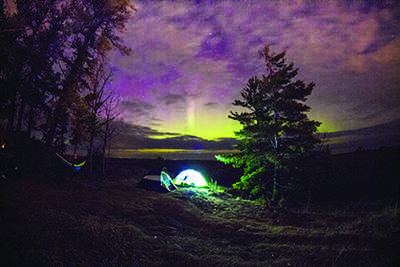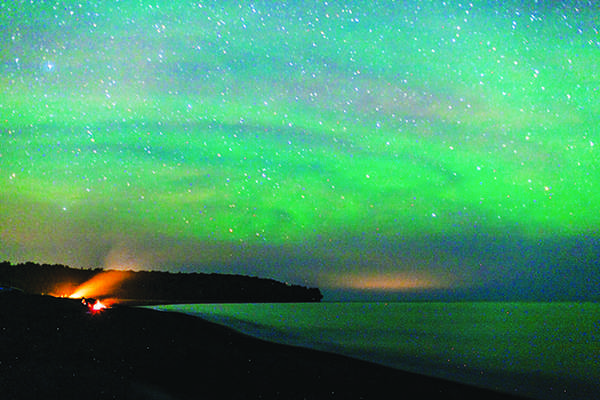One benefit of living in the Upper Peninsula is the opportunity to see the ever-fleeting Northern Lights in our dark skies, but the green glow low across the sky can be a difficult sight to get a glimpse of.
“Astronomy at this time is a very difficult interest as far as observing because you have to go out when something is happening, not when it’s convenient. It’s not really a planned event. There’s no billing as to what’s going to happen,” said Facilitator of the Marquette Astronomical Society, Scott Stobbelaar, but he gave some tips on how to catch yourself looking up at the Aurora Borealis.
The anomaly occurs when charged particles  from the sun get attracted to the electrons in the earth’s magnetic field. The electrons spiral out around the magnetic field lines and head towards the strongest points, the North and South poles, he said.
from the sun get attracted to the electrons in the earth’s magnetic field. The electrons spiral out around the magnetic field lines and head towards the strongest points, the North and South poles, he said.
“As the electrons get into the atmosphere they can charge the gases in our atmosphere so it’s something like a neon sign or fluorescent tube.”
The oxygen and nitrogen laying low in the Earth’s atmosphere creates the Aurora’s green hue. If the electros reach even lower, it can cause the oxygen to glow red, he added.
Another sign of auroral activity are spots on the sun, other- wise known as solar activity. The spots indicate high electromagnetic activity which causes more electrons to spin out toward the Earth. Currently solar activity is at the low end of its 11-year cycle, but that doesn’t mean it’s impossible to see the Northern Lights. The activity is projected to pick back up within the next five years, Stobbleaar said.
There is no way to be sure of seeing the lights, but to increase your chances Stobbleaar recommends going out on a clear night when the moon isn’t out and during the darkest point of the night – often around 2 a.m., as well as checking the current solar and Kp activity.
Current conditions and other auroral info can be found at SpaceWeather.com.

























